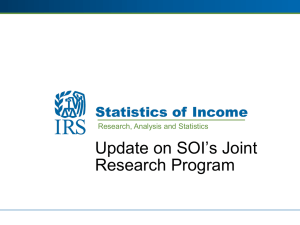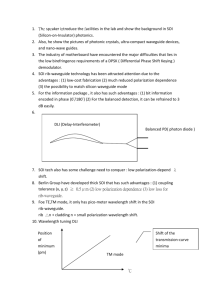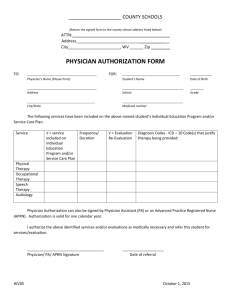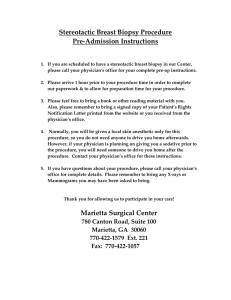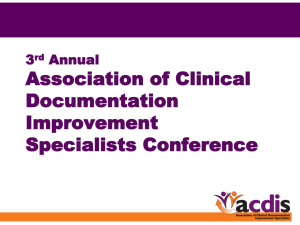Physician Report Card
advertisement
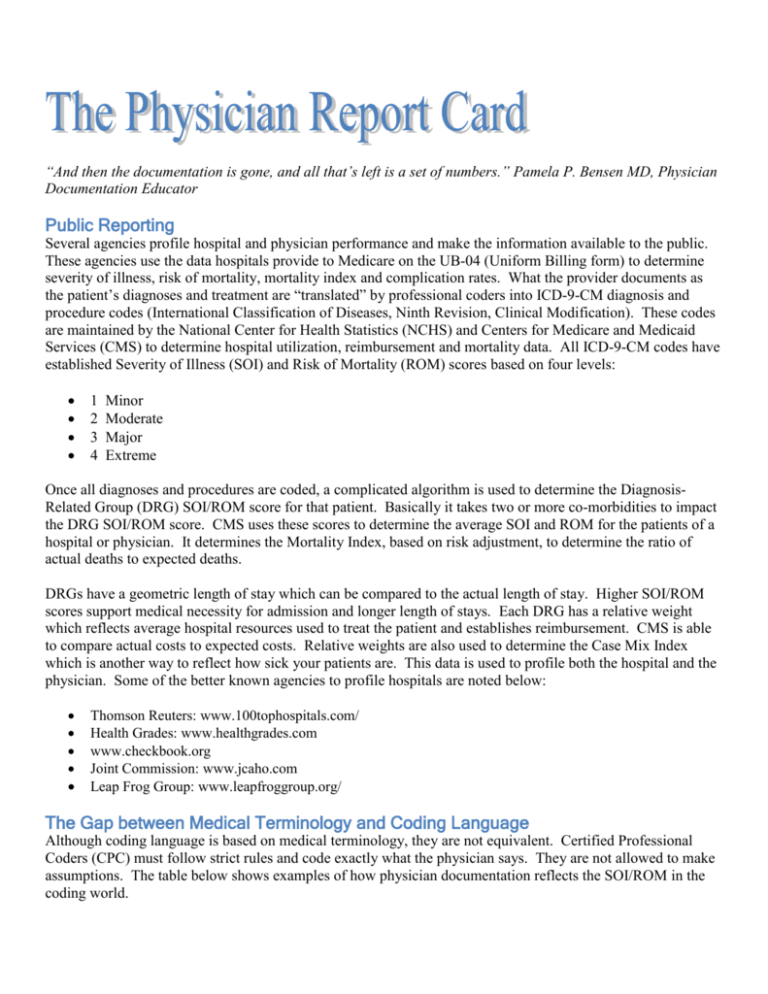
“And then the documentation is gone, and all that’s left is a set of numbers.” Pamela P. Bensen MD, Physician Documentation Educator Public Reporting Several agencies profile hospital and physician performance and make the information available to the public. These agencies use the data hospitals provide to Medicare on the UB-04 (Uniform Billing form) to determine severity of illness, risk of mortality, mortality index and complication rates. What the provider documents as the patient’s diagnoses and treatment are “translated” by professional coders into ICD-9-CM diagnosis and procedure codes (International Classification of Diseases, Ninth Revision, Clinical Modification). These codes are maintained by the National Center for Health Statistics (NCHS) and Centers for Medicare and Medicaid Services (CMS) to determine hospital utilization, reimbursement and mortality data. All ICD-9-CM codes have established Severity of Illness (SOI) and Risk of Mortality (ROM) scores based on four levels: 1 2 3 4 Minor Moderate Major Extreme Once all diagnoses and procedures are coded, a complicated algorithm is used to determine the DiagnosisRelated Group (DRG) SOI/ROM score for that patient. Basically it takes two or more co-morbidities to impact the DRG SOI/ROM score. CMS uses these scores to determine the average SOI and ROM for the patients of a hospital or physician. It determines the Mortality Index, based on risk adjustment, to determine the ratio of actual deaths to expected deaths. DRGs have a geometric length of stay which can be compared to the actual length of stay. Higher SOI/ROM scores support medical necessity for admission and longer length of stays. Each DRG has a relative weight which reflects average hospital resources used to treat the patient and establishes reimbursement. CMS is able to compare actual costs to expected costs. Relative weights are also used to determine the Case Mix Index which is another way to reflect how sick your patients are. This data is used to profile both the hospital and the physician. Some of the better known agencies to profile hospitals are noted below: Thomson Reuters: www.100tophospitals.com/ Health Grades: www.healthgrades.com www.checkbook.org Joint Commission: www.jcaho.com Leap Frog Group: www.leapfroggroup.org/ The Gap between Medical Terminology and Coding Language Although coding language is based on medical terminology, they are not equivalent. Certified Professional Coders (CPC) must follow strict rules and code exactly what the physician says. They are not allowed to make assumptions. The table below shows examples of how physician documentation reflects the SOI/ROM in the coding world. Clinical Documentation “acute renal insufficiency” “acute renal failure” “acute kidney injury” “chronic renal insufficiency” “CKD, Stage III” “End stage renal disease” Codes to… 593.9 Disorder of kidney and ureter 584.9 Acute kidney failure, unspecified 584.9 Acute kidney failure, unspecified 585.9 Chronic kidney disease, unspecified 585.3 Chronic kidney disease, stage III 585.6 End stage renal disease SOI/ROM 1/1 4/4 4/4 1/1 2/2 3/3 Occasionally, terminology used by physicians is not codable. “Midline shift” and “mass effect” are often used to describe pathophysiology of the brain, but neither of these terms can be translated into coding language. The patient may be receiving close monitoring in the ICU, but the documentation doesn’t reflect the SOI/ROM. Clinical Documentation “mass effect” “midline shift” “brain compression” “cerebral edema” “brain herniation” Codes to… Not codable Not codable 348.4 Compression of brain 348.5 Cerebral edema 348.4 Compression of brain SOI/ROM 4/4 4/4 4/4 When the patient’s SOI/ROM is not accurately reflected by physician documentation and a poor outcome occurs, it appears as though complications are occurring in healthy patients. Medicare Administrative Contractors (MAC) Medicare has revised the way it is handling claims for physician and hospital services. Previously the claims from physicians were handled by one contractor and claims from the hospital were handled by another. In 2011 both the claims from Medicare Part A (the hospital) and Part B (the physician) will be handled by one contractor (Medicare Administrative Contractor). Problems occur when diagnoses, procedures and patient statuses billed by the physician don’t match those billed by the hospital. This is a red flag for the MAC which can then call for an audit of the medical record and delay in reimbursement to the providers. The Physician Query The physician query is a tool for Certified Professional Coders and Clinical Documentation Specialists (CDS) to clarify clinical documentation that is conflicting, nonspecific or missing. It helps to establish a diagnosis which more accurately reflects the patient’s Severity of Illness and Risk of Mortality. Since all diagnoses are factored into the patient’s SOI/ROM, the more complete the documentation, the higher the severity and risk adjustment. If you would like assistance in reviewing your documentation to look for opportunities for improvement, please feel free to contact us: Karolyn Skudlarek RN, CCDS, Certified Clinical Documentation Specialist, ext 54315 JoAnn Czech RN, Clinical Documentation Specialist, ext 51592 Sue Baklarz RN, Clinical Documentation Specialist, ext 54301 Thank you
